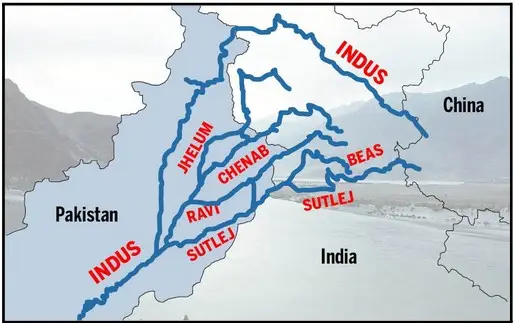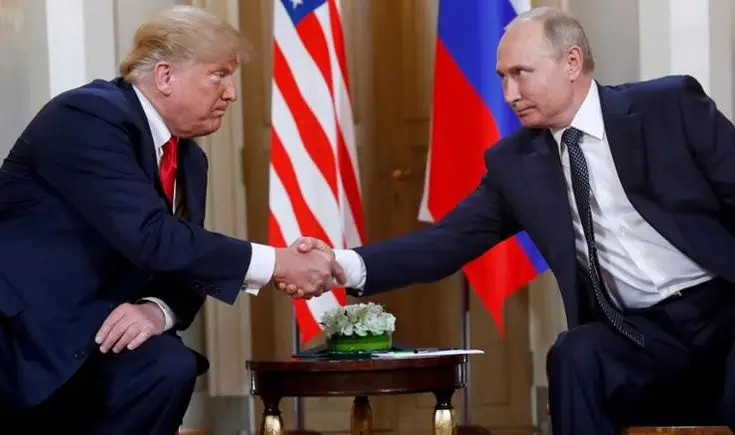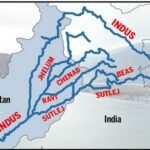Now Reading: Can India Really Stop the Indus River From Flowing Into Pakistan?
-
01
Can India Really Stop the Indus River From Flowing Into Pakistan?

Can India Really Stop the Indus River From Flowing Into Pakistan?
The question of whether India can stop the Indus River and its western tributaries from flowing into Pakistan has resurfaced after India announced the suspension of the Indus Waters Treaty (IWT) — a historic water-sharing agreement signed in 1960 between the two South Asian neighbours.
This move follows a deadly terrorist attack in Indian-administered Kashmir, which India has blamed on Pakistan. In retaliation, India has taken several diplomatic and economic measures, with the suspension of the treaty being the most consequential so far.
What Is the Indus Waters Treaty?
The Indus Waters Treaty, brokered by the World Bank in 1960, governs the sharing of six rivers in the Indus River Basin. The treaty divides the rivers as follows:
- Eastern Rivers – Ravi, Beas, Sutlej: Allocated to India
- Western Rivers – Indus, Jhelum, Chenab: Allocated mostly to Pakistan (about 80%)
Despite two wars and ongoing political tensions, the treaty had remained intact for over six decades, making it a rare example of successful transboundary water management between two rival nations.
What Does the Suspension Mean?
India’s decision to suspend the treaty is unprecedented. For the first time, the upstream country (India) is leveraging its geographical advantage over Pakistan, the downstream nation. While India cannot legally withdraw from the treaty without proper international procedures, suspending cooperation, particularly data sharing and consultations, changes the dynamic significantly.
India has accused Pakistan of supporting cross-border terrorism, a claim Pakistan denies. In response, Islamabad has warned that halting the flow of water into Pakistan would be seen as an “act of war.”
Can India Actually Stop or Divert the Indus River?
- Limited Infrastructure Capacity
Experts say India lacks the infrastructure to completely block or divert the massive volume of water flowing through the western rivers, especially during the monsoon season. Most of India’s projects on these rivers are run-of-the-river hydroelectric plants, which generate power without storing large volumes of water.
“India does not have the storage capacity to hold back the western rivers,” says Himanshu Thakkar, a water expert with the South Asia Network on Dams, Rivers and People.
- Partial Utilization of Allocated Water
India hasn’t even fully utilized its 20% share of the western rivers permitted under the treaty. Indian policymakers have long argued that the country needs to build more dams and storage projects to meet increasing demands for irrigation, drinking water, and hydropower — especially with climate change impacting water availability.
- Future Infrastructure Development
With the treaty now suspended, India is no longer obligated to share technical project details with Pakistan. This could allow India to construct new water projects or alter existing ones without needing Pakistani consent or international mediation.
Impact on Data Sharing and Flood Management
Another critical component of the treaty is data exchange, especially during the flood-prone monsoon season. Pakistan relies on upstream flood data from India to manage its irrigation systems and prepare for potential disasters.
Former Indian Indus Waters Treaty Commissioner Pradeep Kumar Saxena stated that India can now withhold flood-related data, which could pose significant challenges for Pakistan.
However, Pakistan has claimed that India was already sharing limited data — just 40% of what was required, according to Shiraz Memon, a former Pakistani official with the Indus Commission.
Can Water Be Weaponized?
The concept of “water as a weapon” often surfaces during heightened India-Pakistan tensions. The idea is that an upstream country can hold back water and release it suddenly, causing devastating floods downstream. This is sometimes referred to as a “water bomb.”
While India could theoretically do this, experts warn it might flood its own territory first, as the dams are far from the Pakistan border. However, India could flush out silt from its reservoirs without prior notice, potentially damaging infrastructure and agriculture downstream in Pakistan.
The China Factor in the Water Equation
There’s a broader geopolitical layer to this issue. The Indus River originates in Tibet, under Chinese control. In 2016, following another terrorist attack in Kashmir, China blocked a tributary of the Yarlung Tsangpo (which becomes the Brahmaputra) — a move widely seen as backing Pakistan.
China is now building the world’s largest dam on the Yarlung Tsangpo. India has raised concerns about this project, fearing it could give China strategic control over water flows in the region, affecting not just India but the entire Himalayan ecosystem.
Conclusion: Can India Stop the Indus River?
In short, India cannot completely stop the Indus River or its major tributaries from flowing into Pakistan — at least not with its current infrastructure. However, the suspension of the Indus Waters Treaty gives India more freedom to explore future projects, delay data sharing, and develop new ways to utilize its share of water more effectively.
While full-scale water warfare remains unlikely, the suspension of the treaty marks a serious escalation in India-Pakistan relations. The move also sends a signal to both Pakistan and the global community: water can become a powerful tool of geopolitical leverage in South Asia
























